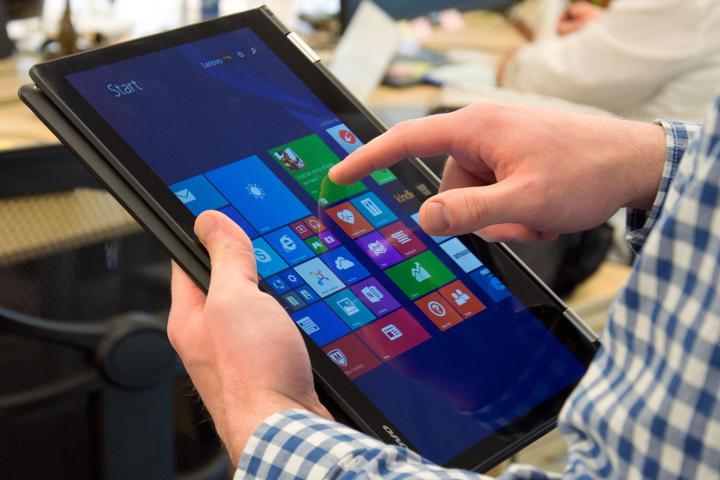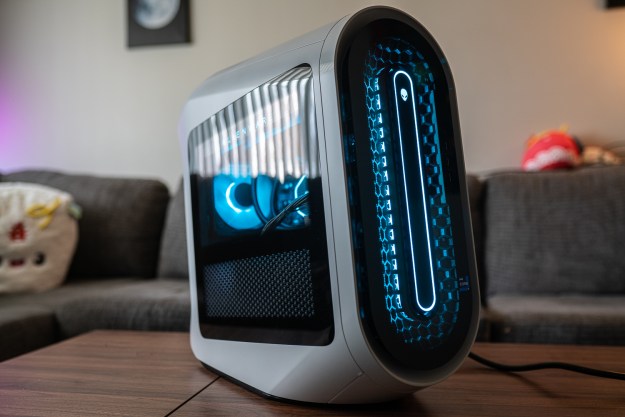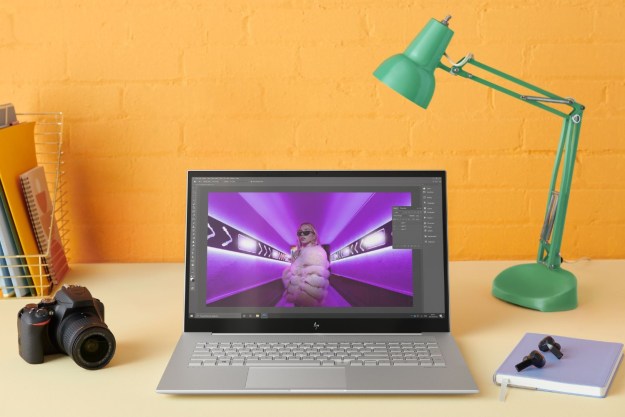
But as with many technologies that have come and gone in history (we’re looking at you zip drives) just because you can do something, doesn’t necessarily mean you should. Are touchscreen PCs and laptops a good investment for you, or something that’s better left to the enthusiasts alone?
Laptops
First, there’s touchscreen-ready laptops.
Convertible laptops (or hybrids as they’re better known), have quickly been gaining in popularity over the past several years, though the devices are still struggling to achieve the same kind of rapid upward trajectory that tablets did when the iPad was first introduced.
Nowadays you’ll find that a lot of capable laptops which do fine on their own in the classic clamshell design also come with the choice of adding on a touchscreen for a nominal fee. Generally this ranges anywhere from a $20 to $100 difference in cost, a number which tends to scale depending on the resolution of a particular display and the amount of power packed into the device itself.
But do you really get much more productivity for that increased sales price? Objectively, we think not.
Even with hybrids entering the market by the handful, there’s still only a select number of touchscreen applications which can actually take full advantage of the technology on a day-to-day basis. As such, the need for touchscreen laptops is reduced to a select group of field professionals who require a special combination of versatility and power out of their machines, and that’s about it.
Otherwise, light, agile tablets do almost the exact same job, and usually cost a fraction of the price to boot. The compromise comes in the form of entries like Microsoft’s Surface 3, which offers a perfect middle ground between workers who need touchscreens, but also want a device that’s light and portable enough to use wherever the job takes them.
All-in-Ones
All-in-ones can be great teaching tools for younger children who learn more through touch than they do interacting with content on a classical mouse-and-keyboard combo.
Windows already has a slew of educational games that are designed to take advantage of the technology, and if you’ve ever seen a toddler pick up an iPad for the first time, you know just how quickly that system of interaction clicks with the way they understand the world.
Touching, tapping, and seeing immediate feedback makes sense to them, and more often than not it doesn’t take more than a week with one before they’re already figuring out tricks and shortcuts that their parents never would have been able to think of on their own.
Along that same train of thought, all-in-ones do benefit from being able to offer the same amount of flexibility and usability as tablets, however the waters get a bit cloudier once you go up in age range.
The problem with all-in-ones is the same with convertible/hybrid tablets: general usability. No matter which way you spin it, the novelty factor of being able to scroll through web pages or zoom-in on pictures using your hands quickly wears off as you realize that 99% of programs and software on normal computers is built for a mouse first, and everything else second.
Sure, it might be nice to have an all-in-one in the kitchen for looking up recipes while you’re cooking, but other than that, the general utility of an added touchscreen is nill.
Software and Operating Systems
Much to the dismay of the most faithful, Windows 8 and its Metro UI was made almost exclusively with touchscreen technology at the forefront of its design. The classic desktop we’d all come to know and love since the days of Windows 3.1 had been shoved into the background as an afterthought, as Microsoft attempted to force its users into thinking about Windows as an OS you used with your hands, instead of a mouse.
The move backfired of course, with many of the Metro stylings being chucked out just in time for the upcoming release of Windows 10. That’s not to say touchscreen users will be completely left out in the cold (the Start Menu will feature a combination of both tiles and regular icons), but if there’s any lesson that Microsoft learned from Windows 8, it’s that neither the mouse, nor the people who prefer to use it over touchscreens, are going anywhere anytime soon.
Conclusion
Whether you find touch worthwhile comes down to how much utility you think you might get out of any one feature. If you think your workday will be made easier by trying to mimic the subtlety of a mouse with your index finger, then a touchscreen could be a reasonable upgrade for your next laptop or all-in-one.
That said, the reason the mouse-keyboard combo has dominated our interaction with computers for so long is because even though carpal tunnel is always a risk, it’s simply easier to rest our hands and arms on a desk for eight hours a day than it is to flail them about randomly in the air over the same period of time.
Arm strain is a real problem that no technology company is equipped to solve on its own, and as long as a mouse does everything we need it to, a touchscreen will continue to remain a luxury, rather than a requirement. Most users don’t need it, and if you’re uncertain what you choose, you should probably save a few bucks and skip touch.
Editors' Recommendations
- The 6 best laptops for realtors in 2024
- Best HP laptop deals: Get a 17-inch workhorse for $270 and more
- Best laptop deals: Save on the Dell XPS 14, MacBook Pro 16 and more
- Best gaming laptop deals: Alienware, Razer, Asus and more
- How to clean a laptop keyboard without damaging the keys




